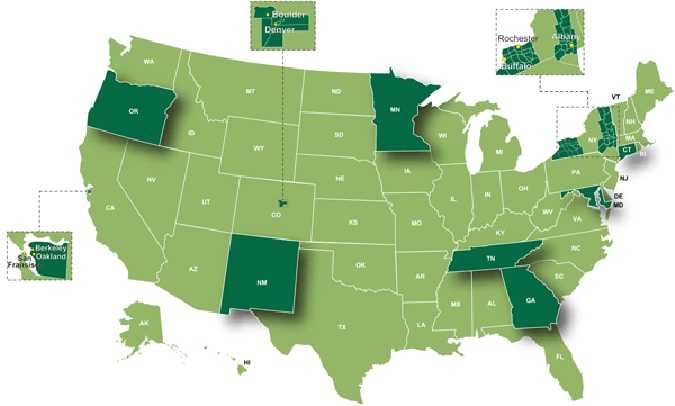About FoodNet

FoodNet’s surveillance area includes 15% of the US population, which was approximately 51 million people in 2022. Read More about the surveillance sites.
- Determine the burden of foodborne illness in the United States
- Monitor trends in the burden of specific foodborne illness over time
- Attribute the burden of foodborne illness to specific foods and settings
- Disseminate information that can lead to improvements in public health practice and the development of interventions to reduce the burden of foodborne illness
The Foodborne Diseases Active Surveillance Network (FoodNet) conducts surveillance for Campylobacter, Cyclospora, Listeria, Salmonella, Shiga toxin-producing Escherichia coli (STEC) O157 and non-O157, Shigella, Vibrio, and Yersinia infections diagnosed by laboratory testing of samples from patients. FoodNet also conducted surveillance for Cryptosporidium through 2017.
The network was established in July 1995 and is a collaborative program among CDC, 10 state health departments, the U.S. Department of Agriculture’s Food Safety and Inspection Service (USDA-FSIS), and the Food and Drug Administration (FDA). FoodNet personnel located at state health departments regularly contact the clinical laboratories in Connecticut, Georgia, Maryland, Minnesota, New Mexico, Oregon, Tennessee and selected counties in California, Colorado, and New York to get reports of infections diagnosed in residents of these areas. The surveillance area includes 15% of the United States population (51 million people). FoodNet is the principal foodborne disease component of CDC’s Emerging Infections Program, which prevents and controls infectious diseases by providing the highest quality scientific information to monitor emergencies, evaluate public health interventions, inform policy, and measure progress in foodborne disease prevention.
FoodNet accomplishes its work through active surveillance; surveys of laboratories, physicians, and the general population; and population-based epidemiologic studies.